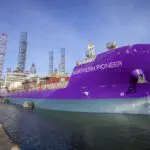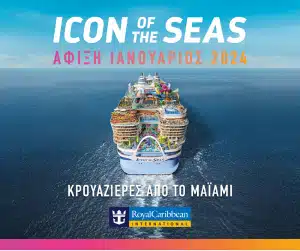We need to talk about coral reefs. In our new report, we estimate that, in a typical year for global shipping, ships using exhaust gas cleaning systems or “scrubbers” could dump millions of tonnes of polluted, acidic washwater within Particularly Sensitive Sea Areas (PSSAs). These include the Great Barrier Reef, home to coral reef systems that are already bleaching due to ocean acidification and climate change. Although PSSAs are established by the International Maritime Organization (IMO) because they need special protection, ships are still allowed to operate inside their boundaries and it’s legal to dump scrubber washwater in them. But should it be?

This is a new issue. Just 10 years ago, only 11 ships in the world had a scrubber installed and thus their washwater discharges were of little concern. But that changed quickly. We already covered in a previous blog how the introduction of the IMO’s 2020 sulfur limit led to a sharp increase in the use of scrubbers. By the end of 2020, more than 4,000 ships had installed scrubbers. Scrubbers remove sulfur oxides from the exhaust, but in doing so, discharge acidic washwater overboard. Scrubber washwater contains carcinogens such as polycyclic aromatic hydrocarbons (PAHs) and heavy metals that accumulate over time in marine food webs and have toxic effects on marine life.

A new peer-reviewed study published less than a month ago found that scrubber washwater from three North Sea ships had a severe toxic effect on pelagic copepods, the marine organisms that constitute up to 80% of the zooplankton biomass worldwide and are an important food source for many fish species. The authors indicated that the effect from washwater on copepods appears to be more toxic than from crude oil.
Meanwhile, our just-released study finds that the current global fleet of scrubber-equipped ships is expected to dump at least 10 gigatonnes (Gt) of washwater in the ocean in a typical year for shipping. This is nearly equivalent to the weight of the cargo the shipping industry carries in a year. Aside from the more than 25 countries that have a full or partial ban on scrubber washwater discharges in their national waters, washwater can be released anywhere: in ports and harbors near human settlements, in fishing areas, in marine protected areas, and in the critical habitats of endangered species.

Worryingly, our research estimates that 665 million tonnes (Mt) of washwater could be released in PSSAs. According to IMO Assebly resolution, PSSA status requires the adoption of special methods for the prevention of pollution of the sea from things including a ship’s oil, sewage, and garbage. Nothing yet about protection from scrubber pollution.
Out of 15 existing PSSAs, seven protect threatened coral reefs, including the Great Barrier Reef off the coast of Queensland, Australia. According to 2019 ship traffic data, more than 500 ships fitted with scrubbers operate in the Great Barrier Reef PSSA. These ships can be expected to release 32 Mt of washwater directly into the Great Barrier Reef in a typical year (Figure 1).

The Great Barrier Reef is already experiencing decline after mass bleaching events and a major loss of reef biodiversity. Two of the main reasons for this are acidification and increasing sea water temperature, and both are of concern with washwater from scrubbers, as it’s higher in temperature and can be more acidic than seawater. In a study published late last year, we found that some scrubbers emit washwater with a pH of less than 3. Compare that to seawater, which has a typical pH around 8. The pH scale is logarithmic, so a pH of 3 is 100,000 times more acidic than a pH of 8.
It’s important to understand that a ship with a scrubber installed doesn’t have to use that scrubber. Scrubber-equipped ships could still service the same routes, but while in PSSAs, they could be required to burn low-sulfur fuel like marine gas oil (MGO). That would comply with the IMO’s sulfur limit and eliminate the danger from washwater discharges.

This is a global problem. The Great Barrier Reef is only one of hundreds of coral reefs around the world exposed to washwater discharges. Figure 2 below illustrates the evident overlap between washwater discharges and coral reefs. Three additional areas of note are the Red Sea in Africa, the reef system in Japan, and the protected coral reefs of the Caribbean Sea. In the Caribbean, the washwater would mainly be dumped by cruise ships once operations resume.

Allowing scrubber discharges in protected areas risks harm to ecosystems already deeply impacted by human activities. Would it not make perfect sense to initiate international regulations to protect the most sensitive and ecologically vulnerable areas like PSSAs? After all, the IMO’s own website says these are the areas that need “special protection through action by IMO.”
Source:theicct.org









